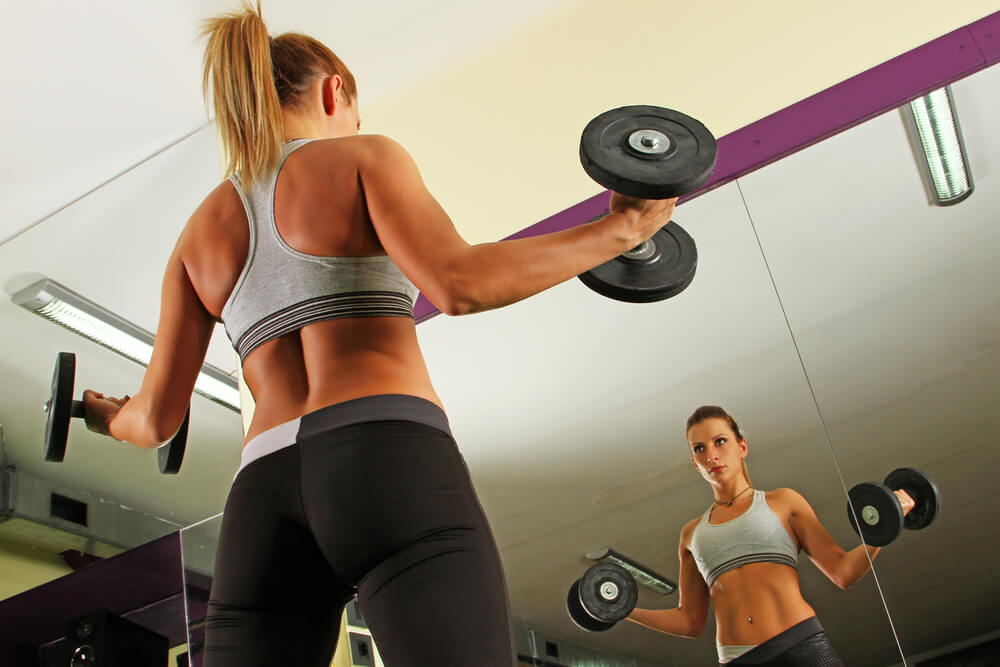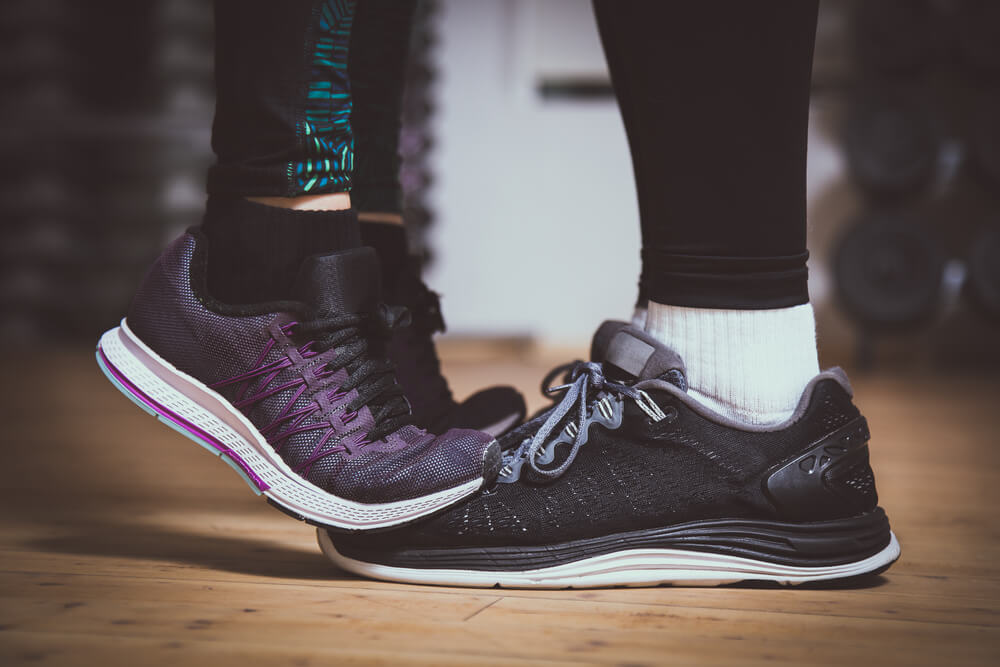
If you want to build the best body, you need cardio. But, when is the best time to do it? Is it cardio before or after weights?
What are the advantages?
We’ve got all the info.
The benefits of cardio workouts are vast. Whether you run, walk, bike, swim or jump rope you are already ahead of the game. But, there has been an ongoing debate for years. You’ve heard it.
Should you do your cardio after lifting or before?
Does it matter?
What’s the logic?
You’ve got questions. We’ve got answers!
We’re here to help you out and get you informed on the best time to do your cardio, before or after weights.
According to Duke Medicine, aerobic exercises did a much better job than anaerobic exercises when it came to burning visceral fat and liver fat, as well as improving insulin (which lowers chances for getting diabetes). Duke Medicine also revealed that aerobic exercises burned 67% more calories than anaerobic exercises. In other words, if losing weight is your goal, cardio is a great weapon.
According to Harvard Medical, a 30-minute cardio workout can burn between 144 and 294 calories. But, it is important to note than a higher intensity cardio workout will burn a lot more calories, about twice as many, than a low-intensity cardio workout. What’s even better is the fact that you can expect up to 14 hours of caloric burning even after you do your high-intensity cardio workout.
That just scratches the surface when it comes to the benefits of doing cardio exercises. Cardio improves circulation, increases bone density, reduces anxiety, boosts energy levels, reduces bad (LDL) cholesterol and increases good (HDL) cholesterol. Needless to say, it is vital to keeping your body healthy and strong.
Cardio Before Or After Weights Pro’s & Con’s
Cardio Before Weights Benefits
When you do your cardio workout matters in the long run. Doing cardio before lifting weights will use up most of your glycogen stores or your muscle energy. So, you may not be able to do your intense weightlifting workout if you do cardio beforehand.
If you do a light cardio session, maybe a 10 to 15 minute warm up, then you should be fine to do your weight workout afterward. But, if you plan on doing cardio for 45 minutes to over an hour, then you may run into issues with your weight training.
It is also important to note that most of the calories burned during cardio will be burned during those actual minutes spent in that exact cardio session. That’s not the case with weight training. During the best workout routine, you can expect to burn more calories in the couple of hours after you finish.
Cardio After Weights Benefits
Weightlifting won’t use up all of your muscles’ stored energy in much the same way that cardio will. That’s why if you have a moderate muscle building workout, it’s just fine to do some cardio right after it.
If you plan on some intense training that lasts an hour to an hour and a half, you might want to skip your cardio.
You also don’t want to spend more than an hour working out. You may be a gym junkie, but you must know your limits. Don’t overtrain your muscles.

Cardio And Weight Training Results (Why You Should Combine)
Regardless of if you are doing cardio after lifting or before, make sure to combine cardio and weight training workouts.
Why?
A study was done with Precision Nutrition that revealed the reasons. The study focused on three groups of volunteers who signed up for a four-month controlled period.
The 66 volunteers in Group 1 focused on resistance training. They exercised one hour for three days a week and mainly used machines that targeted major muscle groups. Group 2 focused on aerobic exercises. This group had a total of 73 volunteers. They worked out three days a week. In those workouts, they jogged about 12 miles a week and, in total, had 130 minutes of aerobic exercise during the week. Group 3 had 57 volunteers and combined resistance training and aerobic training. They did about 12 miles a week and used eight different resistance exercises totaling five hours a week of exercise.
The results were quite telling.
Group 2, the aerobic exercise group, actually lost the most weight. The resistance training group gained weight. But, it was Group 3, the combo of resistance and cardio group that gained lean mass. They also found that the aerobic group lost lean mass. They concluded that it was the combo group that had the greatest change in fat mass, without losing their lean body mass. You already know the benefits of doing cardio.
Combine those with some weight training workouts and you will have your beach bod ready before you know it – and you can invest in spring break workout.
What Are Your Workout Goals?
What are your fitness goals?
Depending on if you want to bulk up and get buff or stay lean and keep your muscle, there is a cardio workout that is just for you.
If you want to stay lean and muscular, you’ll get the most out of your cardio by doing one to three sessions a week. These sessions should last 30 to 45 minutes. If you want to get buff, do cardio four to five times a week. Doing a moderate to high cardio workout for a 45 to 70-minute session is ideal.
Another great thing about cardio is it is essential to losing some of that unwanted belly fat. A study in 2009 reported that aerobic exercise also helps people to prevent the regaining of weight in their stomach area.
This is backed up in the Duke Medicine study that was mentioned prior. Their study showed that those who did aerobic exercises regularly for eight months lost around two and half inches of belly fat. That is one and half inches more than those who did a combo or aerobic exercises and 20 times more than those who only did weightlifting exercises.

Cardio Can Help You Sleep
Cardio exercises also help improve sleep. This is vital as sleep issues can lead to other diseases including obesity, diabetes, and depression. There are around 50 to 70 million Americans who suffer from sleeping disorders.
SO ask yourself does sleep affect muscle growth?
Studies have shown that people who sleep less than six hours a night are more likely to have a higher BMI than those who sleep eight hours a night. Sleep is right in line with overeating and lack of exercise when it comes to risks factors for obesity.
What is it about sleep that is a factor in obesity?
When we sleep, our bodies secrete hormones that help control our appetite, metabolism and glucose hormones.
This is the hormone that tells your brain that you are full. This can result in food cravings even after you have gotten enough to eat.
What kinds of foods?
Often it is sweets to get that quick energy boost.
The National Sleep Foundation found that those who get at least 150 minutes of regular cardio exercise a week improved their sleep quality by 65%. So, you can see how important sleep is for your body and how that is linked to your cardio workouts. Just another reason to make sure you reserve some time every day to get your heart pumping.

Pre-Workout Food
It is vital to eat before each and every workout. Research has shown that people who workout on an empty stomach burn more fat during the exercise itself, but less fat throughout the day.
Also, when you don’t have any calories to burn off your body will look to other sources for energy. And, that’s not a good thing.
Why?
Your body will turn to your muscles. This is called catabolism. What happens is that your body starts burning muscle tissue instead of fat so you’ll lose that muscle that you have worked so hard to build.
So its best to invest in the top pre-workout foods.
Be sure to add a light snack after your workout to save your muscles. Opt for foods like bananas that are full of vitamins and potassium or nuts that provide your body with proteins and nutrients. You may only be doing a cardio session, but you still need fuel.

Count Your Macros Before & After Workouts
You may have heard about counting your macros before or after workouts. Time to invest in meal planning without all the pain!
What exactly are macros?
Macros are also known as macronutrients. They consist of proteins, fats, and carbs.
All calories come from macronutrients, whereas things like vitamins, minerals and sodium are all micronutrients that don’t have calories. Each macronutrient has a specific number of calories. One gram of protein has 4 calories, one gram of carbohydrate has 4 calories, one gram of fat has 9 calories and one gram of alcohol has 7 calories. So, when you are trying to lose that unwanted weight or tone up, be sure to count your macros.
If you just count calories and hope to get fit that way, your quality of weight loss will suffer. If you aren’t getting the protein you should be, then your body will burn muscle. It may sound like of a lot of work to be counting macros, but it is just one more way to be better than ever. There are even some apps for your smartphone that you can download to help guide you through your fitness journey. It will pay off in the long run.

Best Shoes For Any Workout
Everyone knows how important the right gear is when you are doing cardio and weight training workouts. You are pushing your body and your muscles to the limit so you need the right gear that will keep up.
Choosing the right kind of shoe can be a challenge. The McKinley Health Center recommends trying on shoes later in the day or even after your usual workout because that is when your feet are the largest. Make sure to leave half an inch between your big toe and the tip of shoe as well as making sure you can easily wiggle your toe. Also, try bending the shoe just to make sure it isn’t too flexible, which is a sign that it lacks support.
Good workout shoes will protect you from common injuries and can lessen the impact on your feet. Without the right shoes, you are at risk for ankle sprains, fractures, bunions, and corns, among other injuries. Other factors you might want to consider are whether you have flat feet, high arches or just normal feet. These factors will all influence the type of shoes you will need. Be sure to replace your shoes every five to six months, or 400 to 600 miles of walking/running, depending on how often you use them.
Conclusion
Doing cardio is a must. Heart health is no joke. It helps you in so many ways. One health problem can lead to so many others. Make sure you add cardio to your workouts, especially if you are trying to lose some fat.
Cardio and weightlifting burn calories and gets you fit and lean more than just doing one or the other. It is also important to carefully plan your workouts. Decide on if you want to do cardio before or after weights. Don’t forget that if you do too much too fast, then you could start burning muscle instead of fat. Avoid taking that chance.
Count those macros. Make sure you’re getting enough protein to keep those muscles strong and limiting those fats. Don’t forget how important the right shoes are. Cardio alone is hard on your feet, especially if you are jogging and the weightlifting workouts can add just as much strain to your feet. The right shoes will prevent lots of problems in the future. You’re doing cardio to avoid future problems. Follow this info for the best results!
By Sarah Bayard
Latest posts by Sarah Bayard (see all)
- How Much Cardio Should I Do? - Jul 25, 2016
- Eat And Train According To Your Body Type - Jul 1, 2016
- How To Build Muscle Without Fat - Jun 24, 2016











I absolutely love your blog Terry and I really enjoyed this post. It helped me figure out exactly why training and cardio mixed together is the most beneficial.
Thanks again
Jack
Jack,
Thanks for stopping by and glad I could help 🙂
Terry Asher
[…] do you cardio before or after weights? If muscle building is a primary goal then make sure you are not performing intense cardio sessions […]
This one is easy. Weights first! You’ll be able to lift stronger and you’ll use up your glycogen stores if you lift first. So you’ll go straight into fat burning mode during the cardio session. If you did cardio first, Your first 20 minutes would be burning carbohydrates and not fat. Then your body would be trying to use fat energy to lift weights. Not the best choice. Not to mention the nasty mess you leave on the equipment if you do cardio first.
We agree, thanks for stopping by and giving us your input!
-Terry Asher
[…] sure you have heard the debate cardio before or after weights […]
[…] after weight lifting offers better results than doing it before you lift the bar. Your stored glycogen will not be depleted during weightlifting thus you can have extra energy for the […]
[…] So, naturally, you need to burn more calories. […]
[…] boat youre in, the best way to do this is diet. Hitting the gym, lifting weights and performing cardio are all important steps. However, the vast majority of weight loss takes place in the kitchen. […]
[…] own specially tailored HIIT workout. That’s totally fine. There are probably some great pieces of cardio equipment you can use (without just going with the default treadmill or elliptical […]
[…] Source […]